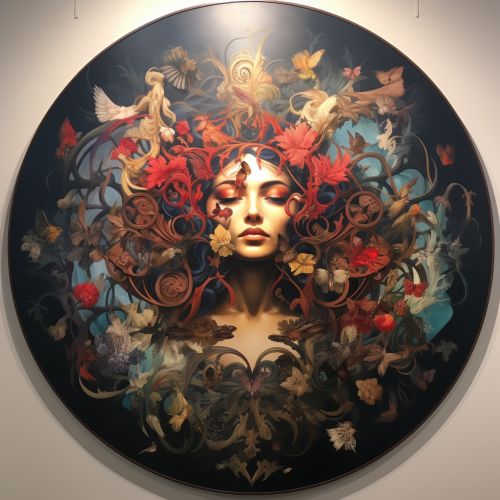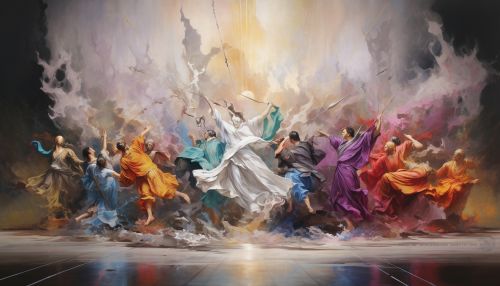Unity (visual arts)
Definition and Concept
Unity in visual arts refers to the cohesive quality that makes an artwork feel complete and finished. It is a principle that suggests that the elements of an artwork should work together to create a harmonious whole. The concept of unity is one of the most fundamental principles of art, and it is often used in conjunction with other principles such as balance, contrast, and variety.


Elements of Unity
Unity in visual arts can be achieved through the use of several key elements. These elements include color, shape, size, texture, and line. When these elements are used in a consistent and harmonious way, they can create a sense of unity in an artwork.
Color
Color is one of the most powerful tools that artists use to create unity. By using a consistent color palette, artists can create a sense of harmony and cohesion in their work. This can be achieved through the use of analogous colors, which are colors that are next to each other on the color wheel, or through the use of monochromatic colors, which are different shades and tints of the same color.
Shape
Shape is another important element that can contribute to unity. By repeating similar shapes throughout an artwork, artists can create a sense of consistency and harmony. This can be achieved through the use of geometric shapes, such as squares, circles, and triangles, or through the use of organic shapes, which are irregular and often found in nature.
Size
The size of the elements in an artwork can also contribute to unity. By using elements of a similar size, artists can create a sense of balance and harmony. This can be achieved through the use of proportion and scale, which are principles that relate to the size of one element in relation to another.
Texture
Texture can also contribute to unity in an artwork. By using a consistent texture throughout an artwork, artists can create a sense of cohesion and harmony. This can be achieved through the use of physical texture, which is the actual tactile quality of an artwork, or through the use of visual texture, which is the perceived texture of an artwork.
Line
Line is another important element that can contribute to unity. By using consistent line qualities, such as thickness, direction, and style, artists can create a sense of harmony and cohesion in their work.
Techniques for Achieving Unity
There are several techniques that artists use to achieve unity in their work. These techniques include repetition, proximity, continuation, and alignment.
Repetition
Repetition is a technique that involves using the same element multiple times in an artwork. This can create a sense of consistency and harmony, and it can help to tie the different elements of an artwork together.
Proximity
Proximity is a technique that involves placing elements close together in an artwork. This can create a sense of cohesion, as elements that are close together are often perceived as being part of a group.
Continuation
Continuation is a technique that involves creating a sense of movement or flow in an artwork. This can be achieved through the use of lines or shapes that guide the viewer's eye through the artwork.
Alignment
Alignment is a technique that involves lining up the elements in an artwork. This can create a sense of order and harmony, and it can help to tie the different elements of an artwork together.
Unity and Variety
While unity is an important principle in visual arts, it is often used in conjunction with the principle of variety. Variety can add interest and complexity to an artwork, and it can prevent an artwork from becoming too monotonous or boring. However, too much variety can create a sense of chaos and disorder, so it is important for artists to find a balance between unity and variety.
Unity in Different Art Movements
The concept of unity has been interpreted differently by different art movements throughout history. For example, in the Impressionist movement, unity was often achieved through the use of loose brushstrokes and a consistent color palette. In contrast, in the Cubist movement, unity was often achieved through the use of geometric shapes and a limited color palette.
Conclusion
Unity is a fundamental principle in visual arts that contributes to the overall success of an artwork. By using elements such as color, shape, size, texture, and line in a consistent and harmonious way, artists can create a sense of unity in their work. While unity is an important principle, it is often used in conjunction with other principles such as balance, contrast, and variety to create a visually appealing and engaging artwork.
